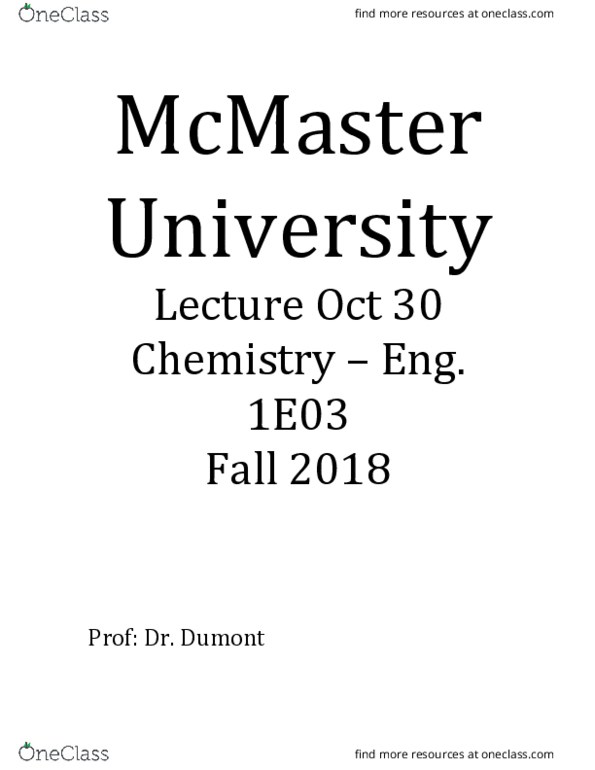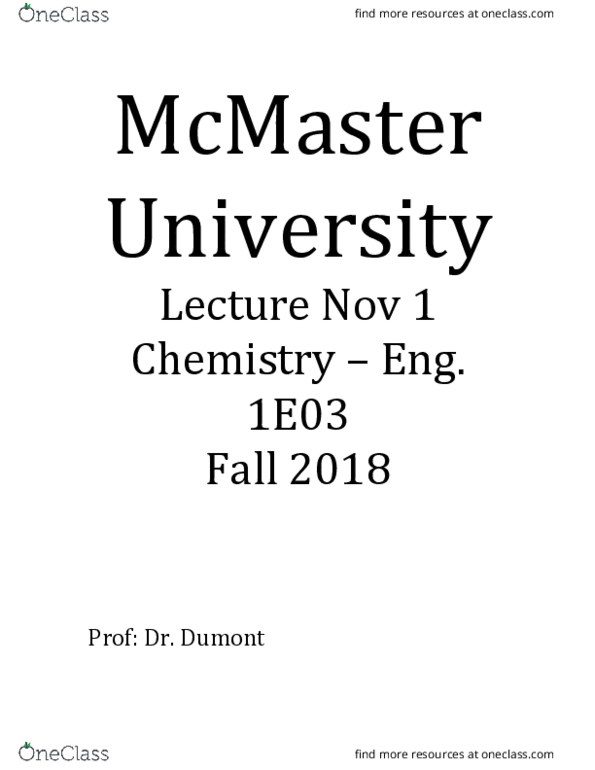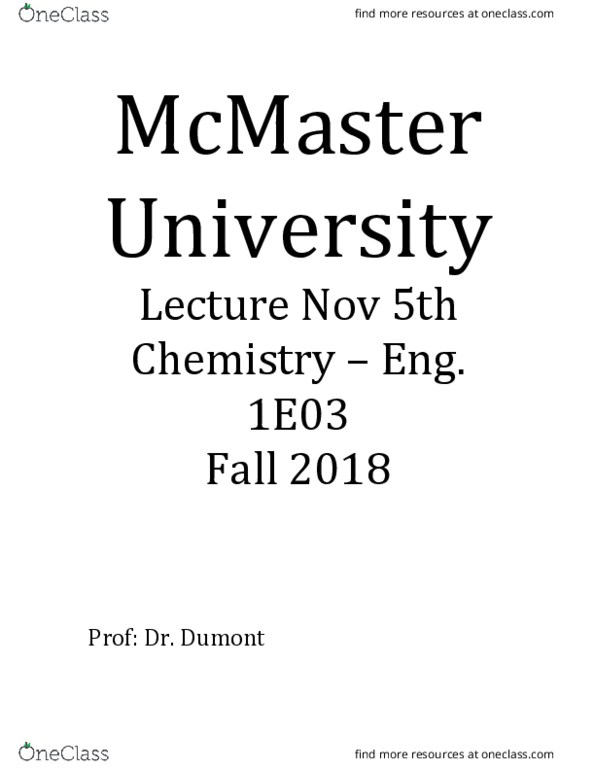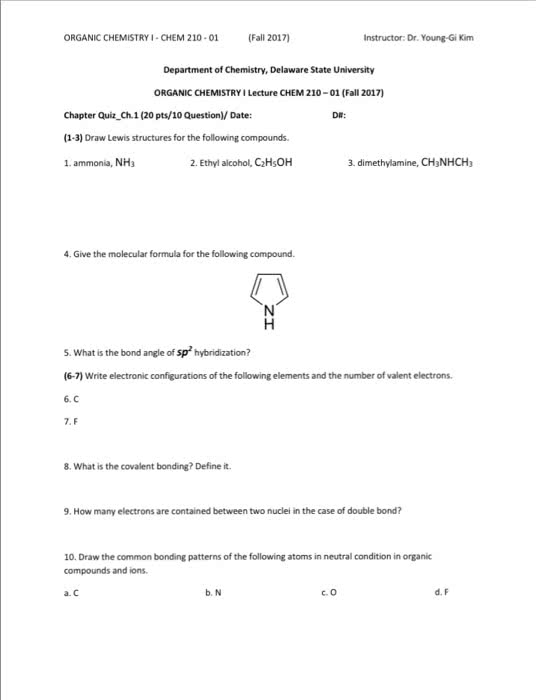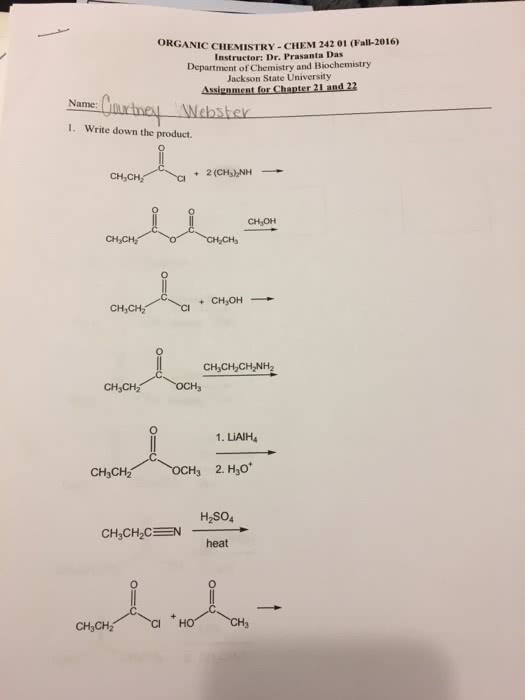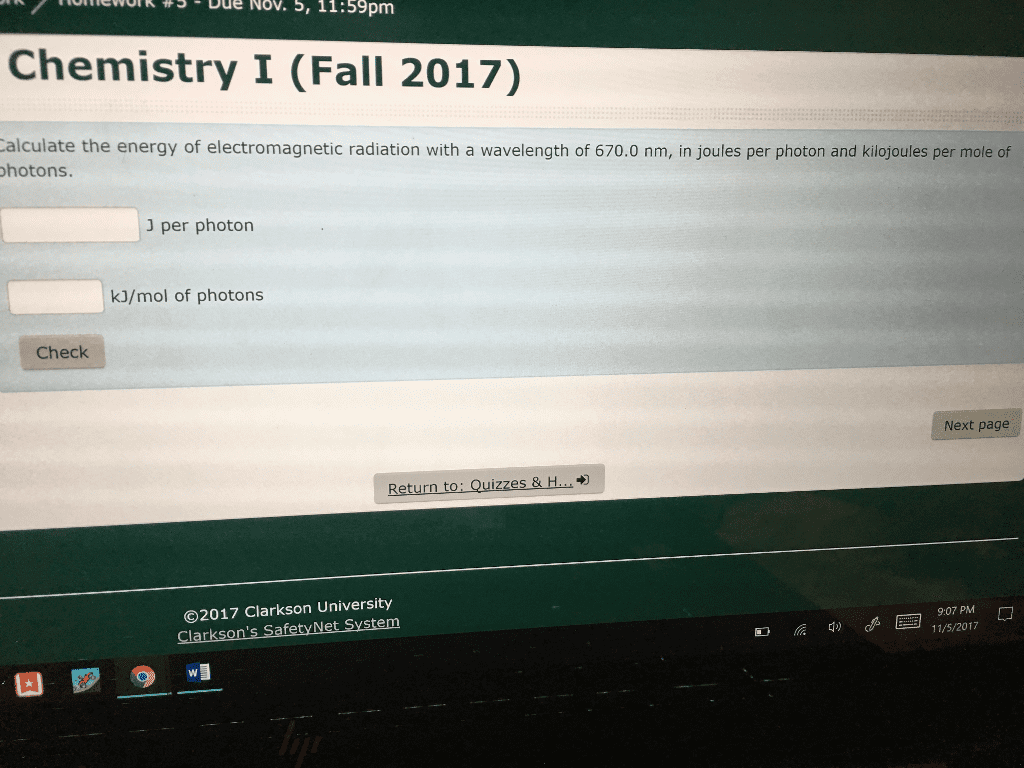CHEM 1E03 Lecture Notes - Lecture 26: Electric Potential Energy, Lithium Chloride, Lewis Structure
CHEM 1E03 verified notes
26/40View all
Document Summary
Reactants: 3(c-h) + 3(c-br) + 1(c-c) 3(h-br) = [6(c-h) + 3(br-br) + 1(c-c)] [3(c-h) + 3(c-br) + 1(c-c) 3(h-br)] = 3(c-h) + 3[br-br] 3[c-br] 3[h-br] Converting other reactions to gas phase reactions: break/make intermolecular bonds, h gas phase reaction 4 hvap [h20, subtract the vaporization of water to convert this into a gas equation. ** take elements in standard states to make them elements in gas phase via sublimation or vaporization. Application of formula: h gas phase reaction 4 hvap [h20] H = 2[c-c] + 8[c-h] + 5[0=0] 3*2[c=0] 4*2[0-h] From here below is not on midterm 2. Solution: nacl < licl < lif < cacl2 < mgcl2, naf < srbr2 < srs < cao < al2o3. First look for the largest charges (these will be the biggest al is usual for this) Compare compounds with the same charges, by radii.
